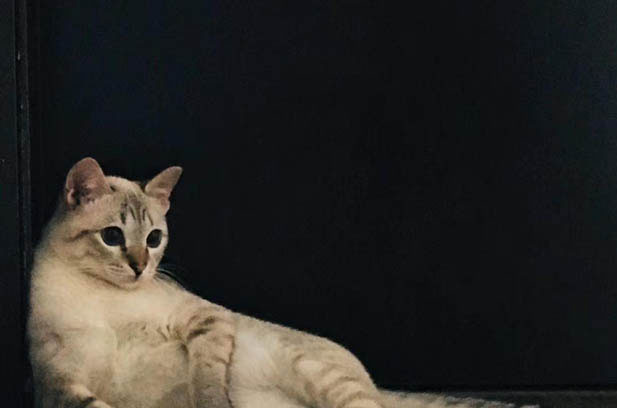In the realm of feline aesthetics, few breeds spark as much debate as the Siamese. Often labeled “strange-looking” by those unfamiliar with their charm, these cats embody a unique blend of elegance and individuality that transcends fleeting trends. My two traditional Siamese companions, with their distinct “bun faces,” are a testament to this misunderstood beauty—a beauty that lies not in conformity, but in the courage to be unapologetically different.
The Myth of “Strangeness”: A Closer Look at Siamese Features
The term “strange” often stems from unfamiliarity, and Siamese cats challenge conventional notions of feline cuteness. Their angular faces, large ears, and striking color points (darkened fur on the face, ears, paws, and tail) create a silhouette that defies the round, fluffy “cuteness” celebrated in breeds like Persians or Scottish Folds. My cats, Luna and Kael, are often mistaken for dogs at first glance—a testament to their alert, upright posture and dog-like loyalty. “Is that a miniature panther?” one visitor once asked, marveling at Kael’s sleek, seal-point coat and piercing blue eyes.

But their “unconventional” features are precisely what make them captivating. Luna’s face, with its high cheekbones and delicate muzzle, resembles a sculptor’s masterpiece—each line intentional, each shadow a stroke of artistry. Kael’s ears, broad and triangular, swivel like radar dishes, always attuned to my movements. These are not flaws; they are markers of a breed evolved for grace and intelligence, designed to stand out in a sea of sameness.
The “Bun Face” Siamese: A Nod to Tradition
My pair belongs to the “traditional” Siamese type, often called “applehead” or “old-style” due to their slightly rounder heads (the so-called “bun face”) compared to the modern, ultra-sleek “oriental” Siamese. This subtype is a bridge between the breed’s historic roots and contemporary standards, retaining the expressive eyes and color points while offering a softer, more approachable silhouette.
Critics may dismiss their look as “odd,” but to me, their faces are a canvas of emotions. When Luna cocks her head, her ears tilting like question marks, I see curiosity incarnate. When Kael narrows his eyes in a playful glare, his “bun face” softens into a mischievous grin that could melt stone. These are not static features but living, breathing expressions of personality—a reminder that beauty lies in movement, in life, in the way a cat’s face lights up when they spot their favorite toy.
Aging Gracefully: The Evolution of Feline Beauty
A common fear among Siamese owners is the “loss of beauty” as their cats age. Like human teenagers transitioning from childhood to adulthood, Siamese often undergo a dramatic transformation: kittens start as snowy-white bundles with pale blue eyes, gradually developing deeper color points as they grow. My own cats were once fluffy, almost angelic in their innocence—Luna’s seal points emerged like shadows at six months, while Kael’s chocolate-colored markings deepened into rich mahogany by his first birthday.
Some lament this change, comparing it to “growing out of cuteness,” but I see it as a journey into sophistication. Their adult coats, now sleek and defined, tell stories of playful adventures and lazy afternoons. Kael’s once-pale nose is now flecked with dark spots, a map of where he’s nuzzled against sun-warmed windows. Luna’s eyes, once bright and wide, now hold the wisdom of a cat who’s mastered the art of “sneaky snack theft.” Aging hasn’t diminished their beauty; it’s layered it with depth, like a fine wine or a well-loved book.
Why Beauty in Cats (and Life) is Better When Unconventional
The debate over Siamese aesthetics reflects a broader societal tension: the pressure to conform versus the courage to embrace the unique. In a world of filtered photos and trend-driven standards, Luna and Kael are a rebellion—a reminder that beauty is not a checklist but a feeling. When Kael curls into my lap, his dark paws tucked neatly under his chest, I don’t see “flaws”; I see symmetry in his asymmetry, grace in his gangly legs, and perfection in his purrs that rumble like distant thunder.
This mindset extends beyond cat ownership. Just as some prefer the bold flavors of gourmet coffee over generic blends, or the raw energy of indie music over pop hits, the love for a “strange-looking” cat is a celebration of individuality. It’s a choice to see the extraordinary in the ordinary, to find magic in the misunderstood.
The Last Word: A Challenge to Critics
To those who dismiss Siamese cats as “ugly” or “odd,” I offer this challenge: spend a day with Luna and Kael. Watch how they “argue” with squirrels through the window, how they invent games with crumpled paper balls, how they knead my blanket with the precision of tiny bakers. Notice the way their tails curl when they’re happy, the trills they use to demand attention, the softness of their fur when they press against my cheek.
You may not instantly adore their looks, but you’ll witness something far more compelling: a bond built on acceptance, not aesthetics. And perhaps, in time, you’ll realize what I’ve known all along: the most beautiful things in life are the ones that make us feel seen, loved, and unafraid to be exactly who we are—flaws, quirks, and all.
Leave a Reply